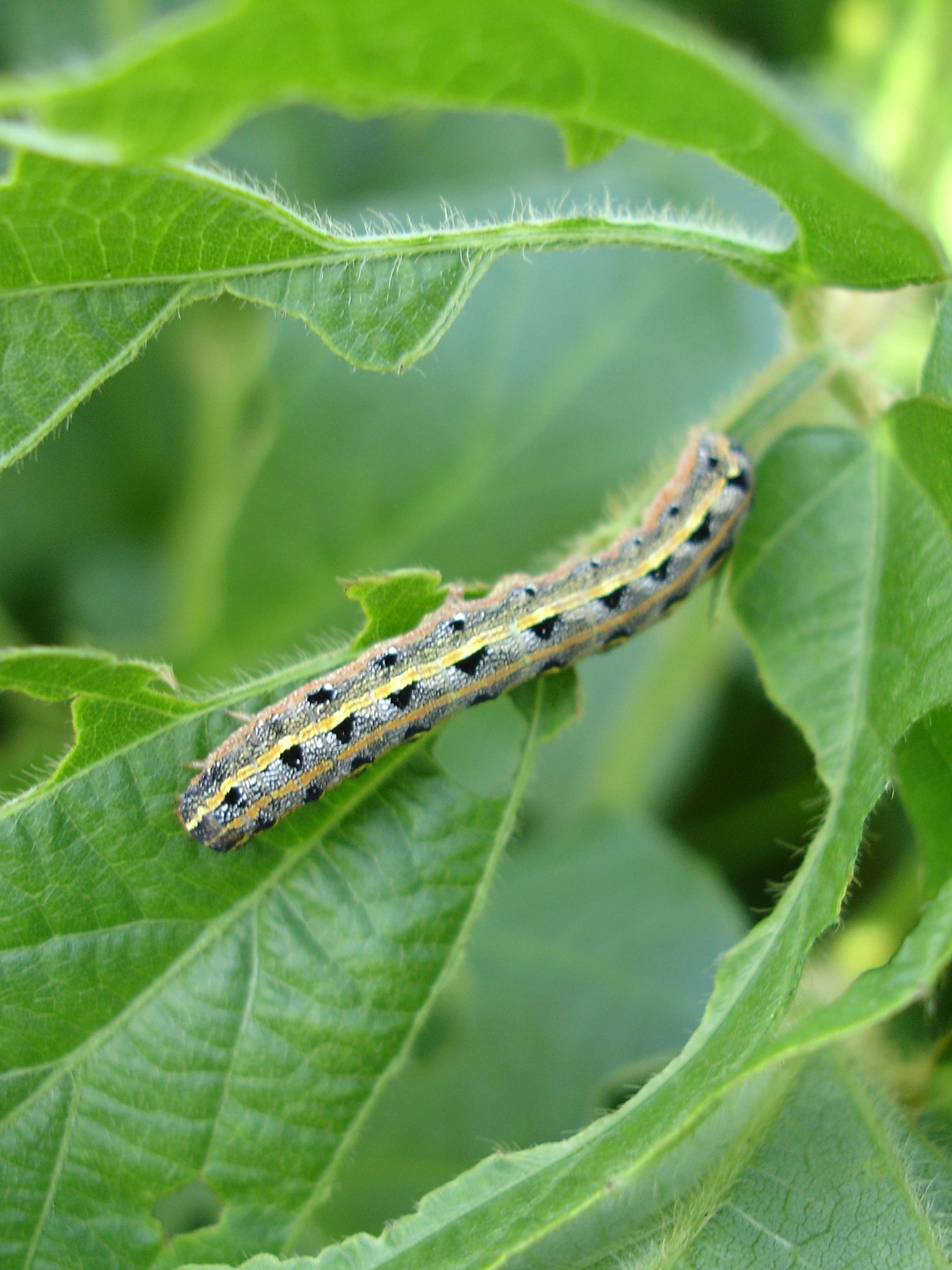This year we have seen a tremendous outbreak of armyworms affecting pastures and hay meadows like we typically expect to see. What is making this year unique is the tremendous amount of home owners have noticed them in their lawns.

Outbreaks can occur in late summer and fall, and follow periods of rain which create favorable conditions for eggs and small larvae to survive. The earliest occurrence one livestock producer told me he saw them was July 4th.
Armyworms are very small at first, causing little plant damage, and as a result, infestations often go unnoticed early on. Larvae feed for 2-3 weeks and full-grown larvae are about 1 to 1 1/2 inches long. Armyworms consume 80% of their total food intake during the last few days of their life as a caterpillar.
Once larvae are greater than 3/4 inch, the quantity of leaves they eat increases dramatically. During the final 2-3 days of feeding, armyworms consume 80% of the total foliage consumed during their entire development. For this reason, extensive feeding damage can occur in their last few days.
Development from egg to adult requires about 3 to 4 weeks during the summer and is longer during cool weather. There are several generations a year. Development ends with cold weather in November.
Given their immense appetite, great numbers, and “marching” ability, armyworms can damage entire fields, pastures, or neighborhoods in a few days. Once the armyworm completes feeding, in tunnels into the soil and enters the pupal stage. In 7-10 days, the moth emerges from the pupa and starts its cycle anew.
The key to managing armyworms is to detect infestations before they have caused serious damage. Often, rural landowners will notice large numbers of cattle egrets on a hay meadow. Though the birds are easy to spot, this may be too late.
In residential areas, homeowners will notice the caterpillars crawling across walkways and onto the porch.
The best way I’ve heard to detect armyworms in an open pasture is to regularly scout pastures early in the morning while there is plenty of dew on the grass. Wear your black rubber boots and walk thru fields, or drive thru them on your ATV with a foot dragging off to the side, looking for small caterpillars on your boot. Affected grass may have a ragged look, different from grazed or mowed grass.
Armyworm larvae feed primarily during the night and during cloudy weather. Later during the day, look for armyworms under loose soil and fallen leaves on the ground.
The density of armyworms sufficient to justify insecticide treatment varies. Typically infestations of 2-3 armyworms per square foot would justify treatment.
Hot, dry weather and natural enemies limit armyworm populations. Insect parasites such as wasps and flies, ground beetles, and other predators help suppress armyworm numbers. However, these natural factors can be overwhelmed when large numbers of migrating moths lay tens of thousands of eggs in a lawn or field.
There are a number of insecticides labeled for armyworm control in pastures. Remember that approved insecticides can kill non-target insects. Do not allow drift across fences to areas with blooming plants as beneficial pollinators will certainly be harmed.
For home owners, it is very important to make contact with the worms by spraying in the morning when they are actively feeding.
For larger agricultural operations, costs vary, but more importantly is the restrictions of certain products related to having a pesticide license, grazing and haying after application. Make sure to read the labels and apply correctly for best control.
Always read and follow all label instructions and restrictions on any pesticide use








